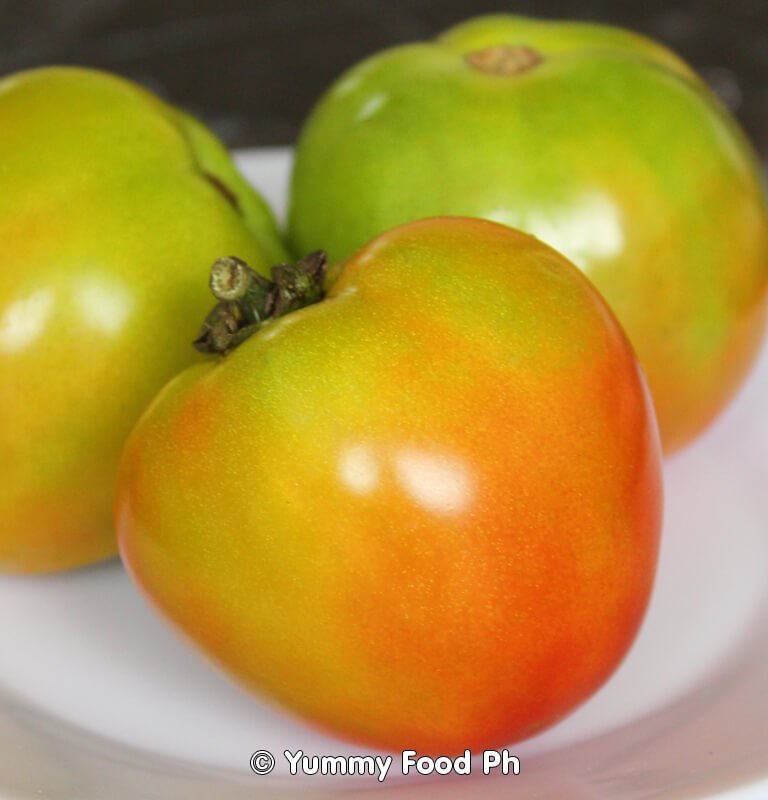Tomato (Solanum lycopersicum): The Versatile Jewel of the Nightshade Family
Introduction
The tomato (Solanum lycopersicum), though botanically a fruit, reigns supreme as the world’s most popular culinary vegetable. Originating in South America and now cultivated globally, this nightshade family member has transformed global cuisine with its perfect balance of acidity and sweetness. From fresh summer salads to rich winter stews, tomatoes offer unparalleled versatility while delivering significant nutritional benefits.
Botanical Characteristics
- Growth Habit: Annual vine (indeterminate) or bush (determinate)
- Fruit Varieties:
- Cherry (1-2cm): Sweet, snackable
- Globe (5-8cm): All-purpose
- Beefsteak (10+cm): Meaty, for sandwiches
- Plum/Roma (oval): Ideal for sauces
- Color Spectrum: Red, yellow, orange, purple, green (when ripe)
Nutritional Powerhouse
- Lycopene: Potent antioxidant (higher when cooked)
- Vitamin C: 28% DV per medium tomatό
- Vitamin K: Essential for blood clotting
- Potassium: Supports heart health
- Fiber: 1.5g per serving
Culinary Applications
Fresh Preparations:
- Caprese salad with mozzarella
- Salsa fresca with cilantro
- Gazpacho (chilled soup)
- Bruschetta topping
Cooked Dishes:
- Italian marinara sauce
- Indian butter chicken
- Spanish tomatό bread
- Filipino ginisang kamatis
Processed Products:
- Sun-dried tomatόes (intense umami)
- Tomatό paste (concentrated flavor)
- Ketchup (world’s favorite condiment)
- Canned whole tomatόes (year-round use)
Agricultural Significance
- Global Production: 182 million tons annually
- Top Producers: China, India, United States
- Harvest Tips:
- Pick when “blushing” for best flavor
- Store stem-side down at room temp
- Never refrigerate (loses flavor)
Health Benefits
- Heart Health: Reduces LDL cholesterol
- Cancer Prevention: Lycopene’s protective effects
- Skin Protection: Combats UV damage
- Vision Support: Rich in lutein
Cultural Impact
- Italian Cuisine: Foundation of Mediterranean diet
- Mexican Food: Essential in salsas
- Middle Eastern: Key in shakshuka
- Filipino: Kamatis in many dishes
Fun Facts
- First tomatoes in Europe were golden (“pomo d’oro”)
- Heirloom varieties date back 200+ years
- World’s heaviest tomato: 4.9 kg (Guinness Record)
These ingredients are frequently used in culinary preparations.
Vegetable or fruit?
In terms of botany, the tomatό is categorized as a fruit even though it is essentially a berry. However, the majority of people refer to it as a vegetable, much like in horticulture.
Conclusion
From its controversial history (once feared poisonous) to its current status as culinary cornerstone, the tomato’s journey mirrors humanity’s quest for flavor and nutrition. Whether enjoyed sun-warmed off the vine or transformed into complex sauces, this remarkable fruit-vegetable continues to inspire chefs and home cooks worldwide. Its perfect balance of acidity and sweetness, coupled with exceptional nutritional value, ensures the tomatό will remain essential in global cuisine for generations to come.
Visit us on YouTube: Yummy Food PH

